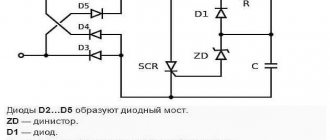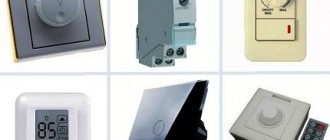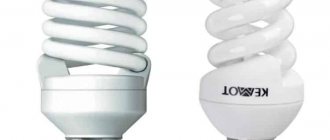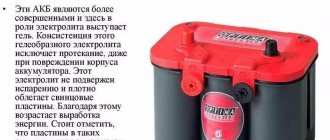Imagine how you get out of bed in your country house in the morning, step on the soft carpet in the direction of the kitchen in order to make coffee and start a new day, and then at one moment the warm pile ends and your foot finds itself on an ice tile. Not the most pleasant start to the day, is it?
This can be avoided by considering the installation of heated floors at the construction stage. Then every day, in at least one room of the house, your feet will not freeze.
Pros and cons of water heated floors
The water heated floor got its name due to the fact that it has some similarity with the classic heating system for multi-storey buildings - radiator. In the case of gender, everything is, on the one hand, simpler, on the other – more complicated.
The pipes carrying hot water are mounted on a screed, filled with concrete, and a floor covering is laid on top. Such manipulations are difficult to carry out independently, unless, of course, you have the appropriate experience and specialization, but it is worth admitting that such masters do not live in every apartment. In addition, there are certain problems with installing such a heating system in a city apartment - you need to coordinate this with the management company, but in private houses it is best to decide on using a heated floor at the foundation pit stage, or even better at the time of design. In the latter case, our company can manufacture plates with special recesses for wires and thermostats.
pros
Heated floors have a large number of advantages:
- The most economical home heating system. Due to the fact that the coolant itself has a relatively low temperature (up to 50 degrees), in rooms with high ceilings, the cost of heating the room is reduced by exactly half.
- Even heat distribution. Due to the fact that the heating comes from the floor, an optimal distribution is achieved - about 23 degrees at the level of the legs and 18 at the head.
- Operational safety. All heating elements are securely hidden under the flooring, which allows you to safely leave small children in the room and not worry about them getting burned.
- Aesthetics. The absence of visible heating elements allows you to create modern interiors without being tied to how best to hide, for example, radiators or convectors.
- Utility. In a house with heated floors it is much more difficult to catch a cold or feel uncomfortable. This is especially true for families with small children, who can simply be left on the floor without warm onesies or woolen socks.
Minuses
In addition to a large number of advantages, heated floors also have their disadvantages:
- As mentioned above, one of the main disadvantages of a water floor is that its installation must be carried out by professionals. And also it cannot be installed with heating from a gas boiler, because the floor will be too hot and all its advantages are offset by this one minus.
- If pipes are laid incorrectly, a leak may occur that will be difficult to repair. This is due to the fact that the pipes are filled with concrete mixture at one of the installation stages and, accordingly, if something happens, the entire structure has to be dismantled.
- Experts do not recommend using heated floors as the only heating system in the house. Ideally, it should be duplicated by additional heaters. Here you can add such a minus as the impossibility of regulating the temperature; if the floor becomes hot, then you can only turn it off and wait for it to cool down.
- Among other things, there are always places where it is impossible to install a water floor, and accordingly, it will still be necessary to install, for example, convectors there.
- Heavy furniture cannot be installed on top of such a heating system, that is, under a cabinet - the floor will not generate heat.
Pros and cons of electric heated floors
Electric heated floors, unlike water ones, have several implementation options:
- cable,
- film,
- mats.
And accordingly, each of them has its own advantages over the others, as well as its own disadvantages.
Cable floor
This type of electric heating system is considered one of the most popular and quite budget-friendly. It consists of special, heat-resistant cables that heat up when exposed to a small current and transfer heat to the floor covering. Like water floors, this type is laid in a screed, which can create some difficulties during turnkey repairs already completed.
The main disadvantage is that if the cable is damaged during operation, then the entire section will have to be replaced; also, few people will like the option that the floors can be used only two weeks after installation.
Heating mats
Formally, these are the same heating cables, simply laid out in a “snake” at the factory and sealed in a special fabric. As a result, their installation is simplified several times. There is no need to make a screed; the mats are placed on a special glue. The only thing is that additional grooves are made on the existing concrete field for better adhesion of the glue and the canvas.
And this type has the same drawback as the previous one - if the sensor fails or a small area is damaged, you will have to re-cover the entire floor or forget about what it’s like to feel warm on your feet.
Infrared film
Of all the underfloor heating options, infrared is one of the most effective ways to heat a room. When using such a film, it seems that the temperature in the room is higher than the thermometer shows. And many will also appreciate the fact that such a system can be installed not only in the floor, but also in the walls, and even in the ceiling, which seriously expands the horizons of creating a warm and cozy home.
It is also difficult to find any disadvantages - this system is installed in one day, you can use all its heating resources immediately after installation, if one of the sections fails, you do not need to change the entire section, but simply replace the broken one and start enjoying the warmth again.
Infrared film floors
The system is based on a carbon layer that covers the film. On the sides the sheets are framed with a copper busbar. It works on the principle of heating a carbon layer with electricity, followed by heat release to the external environment.
We recommend: How to install heated flooring in a garage?
General advantages:
- resistant to sudden temperature changes;
- IR film heats up quickly.
The downside is the rapid cooling of both film and rod sheets.
Infrared film floors
Infrared floors are divided into…
Film:
- the system is quick and easy to install;
- during dismantling, it is possible to reuse the removed structure;
- if a separate part of the system breaks down, the entire circuit will not stop functioning, since the parts are not interconnected and do not depend on each other;
- The film can be easily divided into parts of the required sizes for ease of installation, both in small passages and in large rooms.
Minuses:
- You need to choose your flooring wisely, as it may be too thin or too thick. In the first case, it may be deformed, in the second, the heating efficiency will be reduced;
- The heated floor must be laid on a completely dry surface.
Rod:
- automatic increase and decrease in energy efficiency due to increased or decreased ambient temperature;
- Laying under large pieces of furniture is permitted. Overheating is excluded;
- even if two or more parts fail, the system will function properly.
Disadvantage: mats cannot be combined with a foil backing, since due to the interaction of individual elements, both the film and the backing will be deformed.
General disadvantages and advantages of electric heated floors
Speaking about the advantages of electric heated floors over water ones, one cannot fail to mention:
- Fast and comfortable heating of the room.
- Safety in terms of operation. Such a system will not leak and will not spoil the repairs on the lower floors.
- Relatively easy to install. As mentioned above, some of the options don't even require you to be on the floor.
But, like everyone else, the electric floor also has its disadvantages:
- High electricity consumption for heating. Although there is a solution to reduce costs and level out this disadvantage - heated floors are only installed in the kitchen, bathroom and children's room - all the same, the blow to the wallet can be quite significant.
- Compared to a fairly budget water floor, there are high installation costs and the heating elements themselves.
Comparative assessment of both systems
It is impossible to answer unequivocally which type of heated floor is better.
We can only draw a few general conclusions:
- The cost of arrangement - components and installation of systems is approximately the same. It all depends on the type and operating characteristics of the system. In some cases, an electric floor can benefit from lower component costs.
- The cost of operation for water systems is much lower than for electric ones. Especially when the coolant is heated by a gas boiler.
- Design restrictions . Water systems are not used in the construction of multi-storey buildings.
- Dependence on power supply - electrical systems are dependent on the presence/absence of electricity, water systems will work regardless of this.
- Maintainability . It is cheaper and easier to repair electrical systems. Water-based ones, with the exception of floor options, are difficult and expensive to repair.
In general, both types of underfloor heating have proven themselves well. They warm up rooms evenly and quickly enough, are reliable, and with proper use can last for decades.
When calculating the costs of installing a particular system, you need to remember that before installing a water floor on the first floor of an apartment building, you will need to obtain permission. This means additional costs for collecting documents.
The choice of the type of heating system is also influenced by the type of flooring; more details can be found in the articles:
- Which heated floor to choose for laminate: a comparative analysis of the best options
- Which warm floor is better for tiles: pros and cons of various solutions + review of the best manufacturers
Which is better?
When choosing a heated floor for your home made from SIP panels, you should focus on your financial capabilities, and also, of course, trust the installation only to professionals. As mentioned above, improper installation of, for example, a water heating system can entail even greater costs and a large number of troubles.
On our website you can look at projects of SIP houses and use their layouts to immediately decide where exactly the floor will warm your feet.
What and in what case is it better to choose
In apartments of multi-storey buildings, the installation of water systems is prohibited by the building maintenance rules. However, if you have made such a decision, then it is best to connect the circulation circuit to a heated towel rail. Then there will be no need to install a hydraulic distributor and heat exchanger. But in order not to break the law, choose electric heating.
For private low-rise buildings, you can choose any type of system. Therefore, in the private sector, you can most often see heated floors on the first floor and ordinary heating radiators in rooms on the second floor. Here people consider the main indicator to be reduced operating costs.











